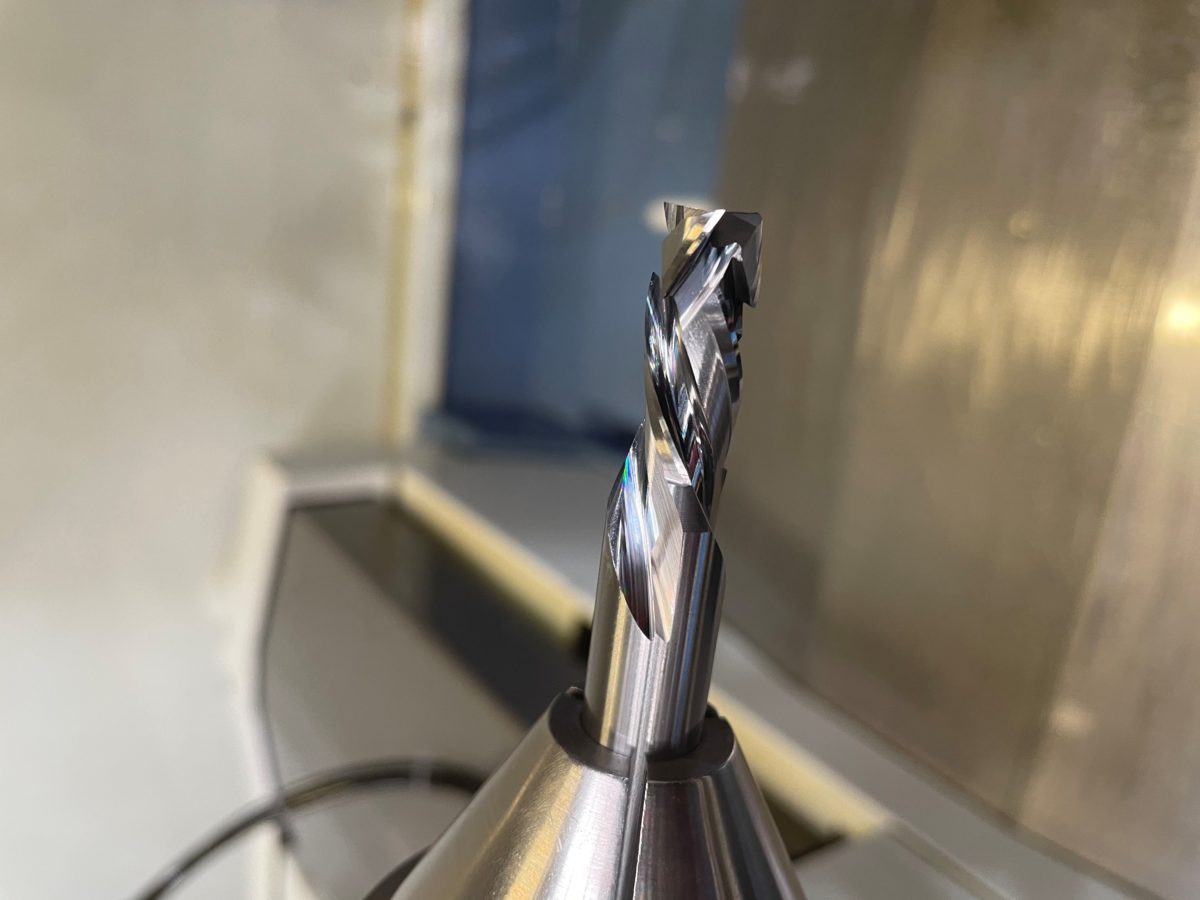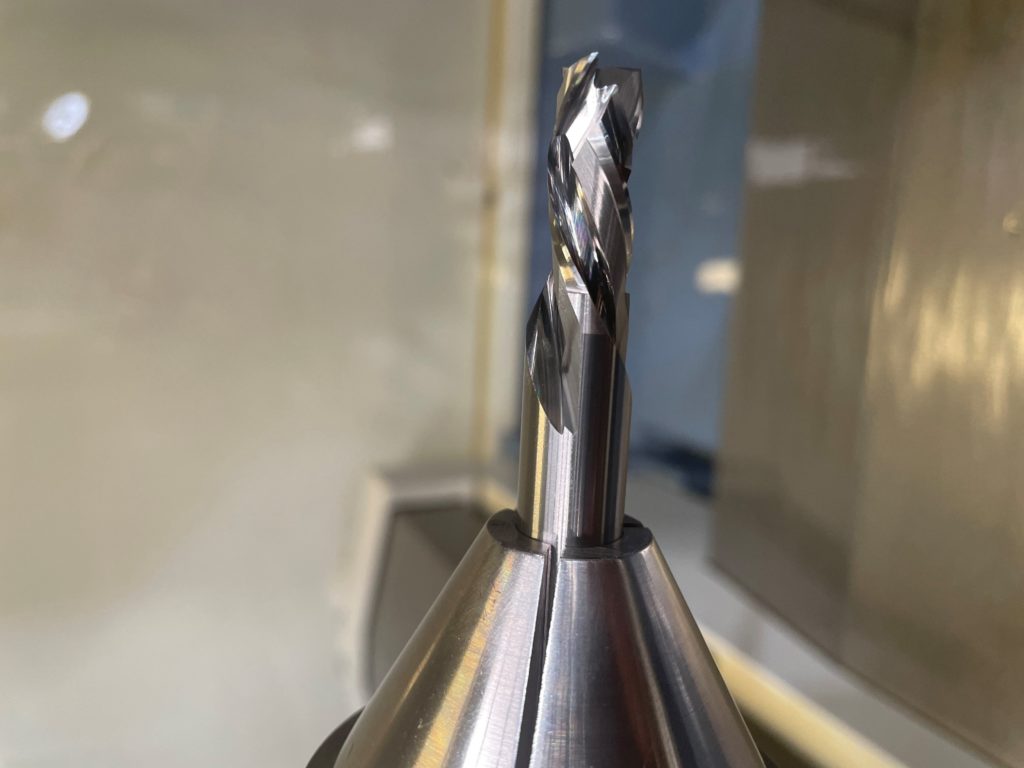6 Ways to Master Compression Cutters
19.11.2020

Compression Cutters are a unique type of cutter that combines both an up and down cut spiral into one bit.
You can see its unique tool geometry up close here:
View this post on Instagram
It is the shear angle that allows you to ‘slice’ rather than the ‘chopping’ action you get by using a traditional straight flute bit. The compression provided by the shear angles aid in achieving a clean finish and help to eliminate any furry edges.
The biggest difference can be seen when cutting light timbers such as Cedar which can be prone to splintering.
To master using compression cutters and to ensure they are working at their optimum there are a few simple tips to follow.
1. Check the Sharpness
Dull cutting tools are the enemy of a perfect finish. Dull tools can lead to splintering, tend to burn more easily and can deflect the workpiece away from the cutting edge.
A dull tool places strain both on your cutters and your componentry. Maintaining a sharpening schedule is key and should be undertaken as an essential part of any maintenance and safety program.

2. Feed and Speed
Having the correct feed rate, how quickly the cutter travels along its tool path, and spindle speed rate, how quickly the cutter rotates, is key to achieving an optimum finish. This will ensure that an appropriate chipload is established so there is no undue stress on the tools.
3. Quality Bits
Substandard tools will never compete with the performance and finish you get with high-quality tools. Carbitool’s range of compression cutters are all manufactured on our ANCA CNC machining centres.
You can even see our Compression cutters hot off the machine here:
View this post on Instagram
This allows us to maintain the highest standard of manufacturing, utilising a 7 axis machine with helical flute grinding capabilities, linear bearings, linear motors, robotic loaders and onboard laser measuring equipment that all contributes to achieving grinding accuracy of 0.003mm.
We are all about locally made, high-quality tools that bring the greatest value to the customer.
You can see just how precise our manufacturing quality is here:
View this post on Instagram
4. Collet Wear
Collets, like any tool, are prone to wear. The two most common wear patterns that arise are ovalization and bellmouthing.
This accounts for around 80% of all tool breakage so it is key to replace any collets that show sign of wear. As a general guide, ER type CNC collets should be replaced every 200-300 operating hours.
5. High-Performance Coated Tools
Carbitool also offers advanced coatings, which offer greater surface hardness for higher wear resistance. The coating makes the cutter slippery, providing lubricity at the cutting edge and giving a smoother finish.
A customer who recently made the upgrade to TICN coated tools said that not only did it result in a 60% tool life increase, but they also tell us it’s the quietest compression bit they’ve ever used.
6. Storage
Like any tool, compression bits should be stored with care. You can either keep the bit in their supplied packs or use a router bit storage box to protect them from undue impact.
It is very important to keep collets clean. Dust, glue or any other contaminants can occupy space and cause undue vibration which can compromise the surface finish.
Follow these tips and you’ll be a Compression Cutter master in no time.
See our catalogue for our range of compression cutters. If you have any questions please contact us.
